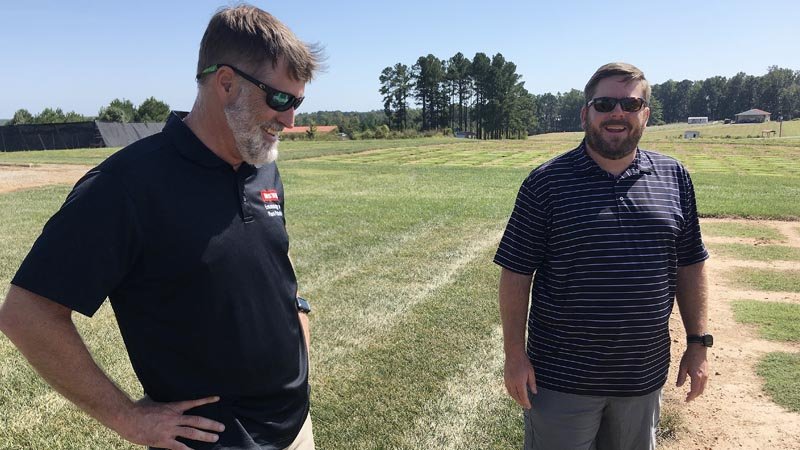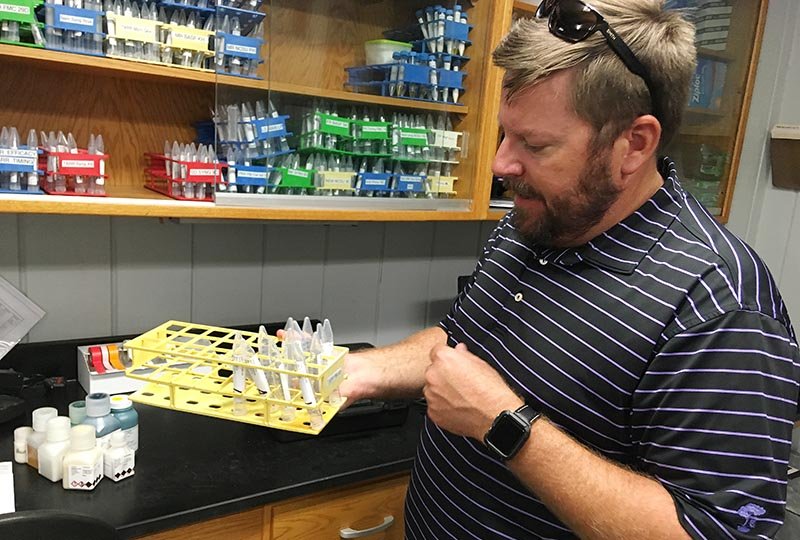
When the turf pathology department at North Carolina State University recently surveyed golf courses throughout the Carolinas about their agronomic practices, Lee Butler was in such disbelief over one of the responses he read that he had to call the superintendent for confirmation.
"We saw on one of the forms someone mowing at 0.065" said Butler, turfgrass extension coordinator at NC State.
 "I had to call the superintendent and confirm is this real. I guess with tournament bed knives you can do that."
"I had to call the superintendent and confirm is this real. I guess with tournament bed knives you can do that."
When it comes to pushing turf to please golfers, Butler and Jim Kerns, Ph.D., associate professor of turf pathology, believe that science and superintendents have gone about as far as they can go. The demands that golfers place on superintendents to produce championship conditions every day - or else - are a threat to the sustainability of the turf and the game itself.
"I don't think we can push it any farther," Kerns said. "It used to be with bentgrass that we only sprayed through June and August. The golfer and the demands they are placing on superintendents have made the game more expensive, because now we spray all the time.
"I started my Ph.D. in 2004, and back then people weren't talking about fungicides in Florida. Now, Florida is the No. 1 fungicide business in the country; one state, where growing Bermuda should be perfect. But they expect the same conditions they see on Long Island or in Chicago in July, they want that in Florida in December. The industry needs to do a better job of communicating that we are asking way too much of the turf."
Marty Parish, the turfgrass manager at NC State's Lake Wheeler Road Field Laboratory research farm and a former golf course superintendent, said the conditions demanded by golfers today are much different than when he was a greenkeeper and are completely unsustainable.
"When I started, greens were running at 9 or 10, and that was fast," Parish said. "Now, they're 12 or 13, and some greens aren't puttable at that speed."
As a result of what is required to coax such conditions from putting greens, nematodes are more problematic than ever and are becoming an issue in places that are unaccustomed to dealing with then, like New York, Colorado, Nevada and Ohio.
"They've always been there," Butler said. "We're now creating an environment that is not sustainable."
I don't think we can push it any farther. It used to be with bentgrass that we only sprayed through June and August. The golfer and the demands they are placing on superintendents have made the game more expensive, because now we spray all the time.
Other problems that are relatively new and once were only seasonal in nature are now becoming more chronic.
"Bermuda decline used to be something that happened in July and August along the Gulf Coast when we would get those afternoon thunderstorms, so nobody really cared about it," Kerns said. "Now, it's a bonafide problem all year long."
To keep up with the demands of professional turf managers - and golfers - there are 200 or more turf research trials, including at least 70 by the turf pathology department, under way at the Lake Wheeler Road farm. Once a privately owned peach farm, the 1,500-acre Lake Wheeler Road facility is about 4 miles from the main campus and is home to all of NC State's agriculture and horticulture programs, including turfgrass science, which occupies 35 acres.
Parish jokes that he prefers life at the farm over the golf course for one reason: "There are no golfers," he said.
Sometimes, Parish's greenkeeping instincts take over and researchers remind him it's a 35-acre laboratory, not a golf course.
"Finding Marty was a lifesaver for us," Kerns said. "But we still have to tell him that we only want turf at 60 or 70 percent. We don't want it that good; we still need weeds and disease. We need crappy turf."
While discussing the projects ongoing at the Lake Wheeler Road farm, Kerns said the industry also must do a better job at communicating that the ever-increasing demands of golfers are not sustainable in the long term.
"In my opinion, we make it too much about the superintendent. We need to make it about the science of the turf. I think people would get that," Kerns said. "In ag, we are our own worst enemy. We don't know how to market ourselves.
"I think we could be more successful in receiving federal funding if we could convince people that turf is the best model system to study. It's high maintenance, things turn over quickly, but it's perennial, but there is the perception that since you don't eat it, it's not important."



